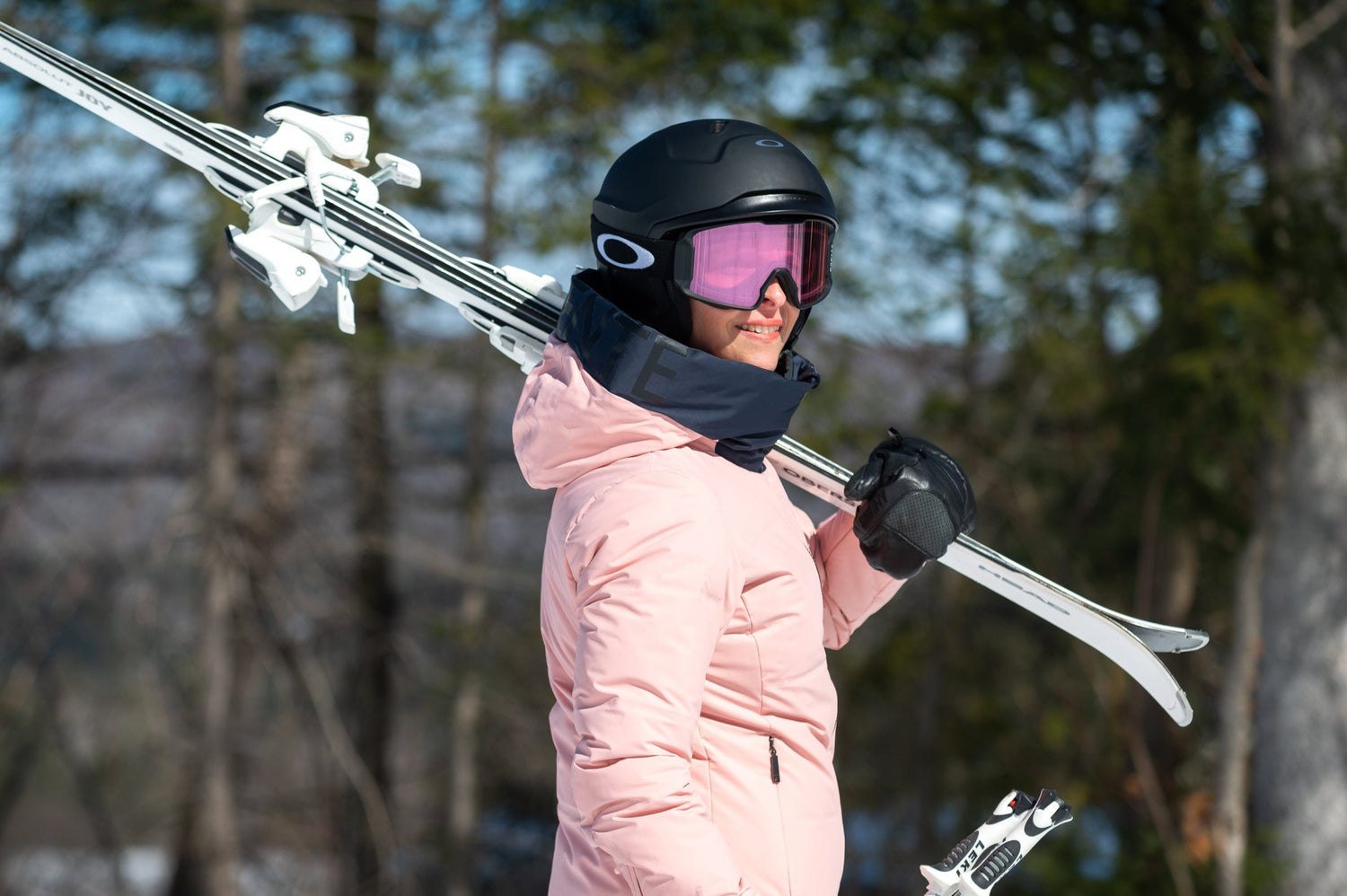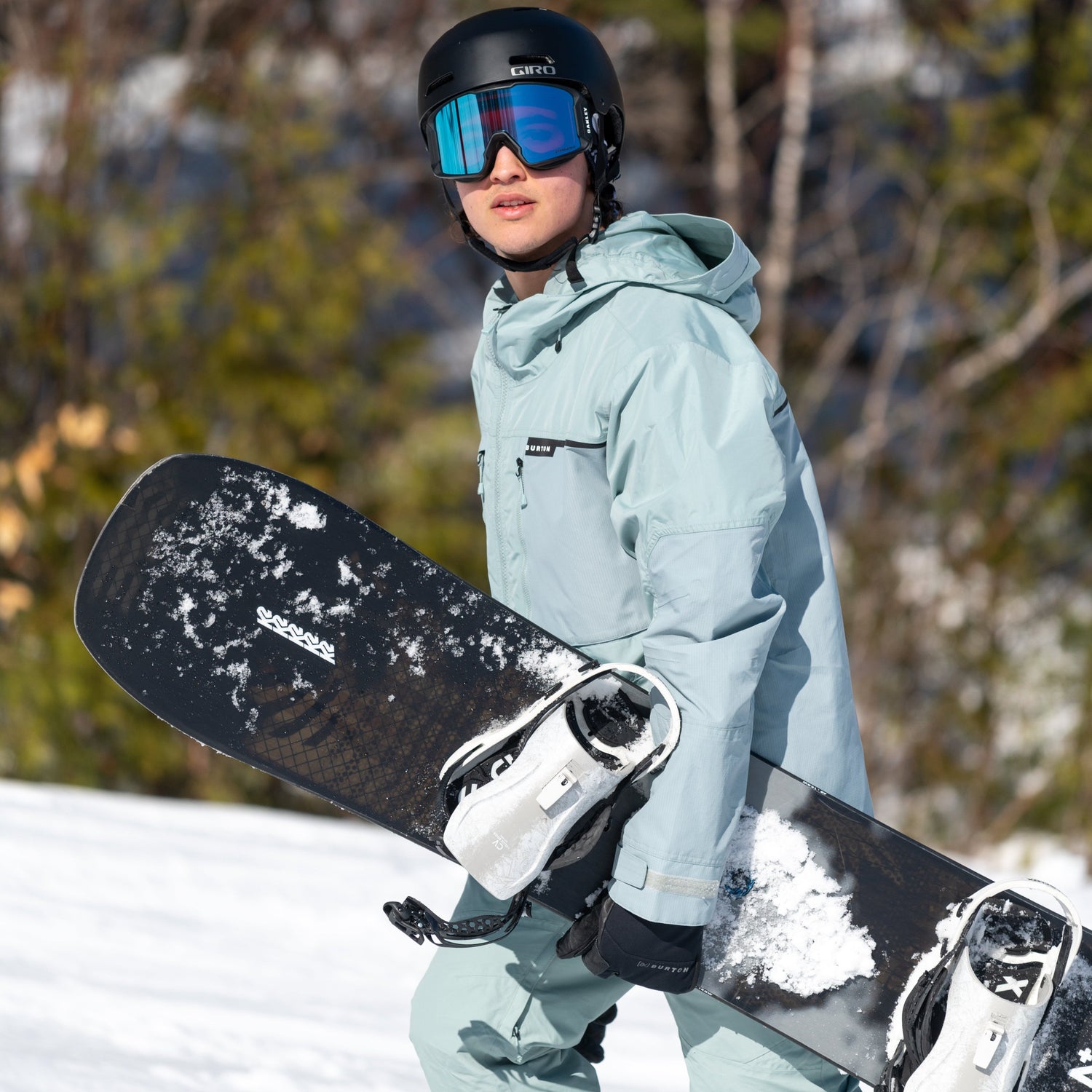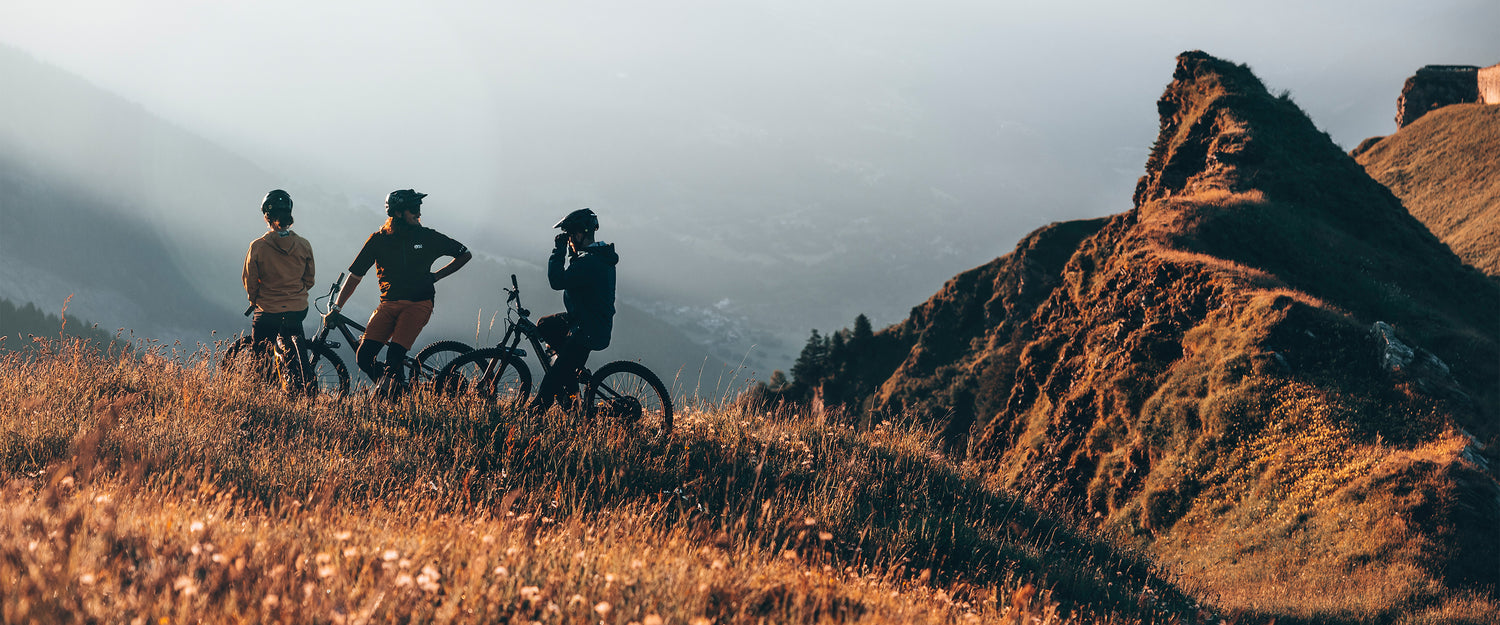There are so many reasons to make mountain biking part of your life. Riding trails immerses you in nature and allows you to share experiences with family and friends. It leaves you sweaty, mud spattered and grinning with a massive hit of endorphins.
Off-road cycling is also a dynamic sport and an outstanding workout. It draws on and develops an array of skills and physical traits. You pedal in and out of the saddle and lean every which way over the frame as you handle different terrains and slope angles. You’re absorbed into a rhythmic cardio session punctuated by short bursts of all-out power. In short, it’s a fun, sociable outdoor adventure that gets you in shape.
You could argue that the first mountain bikers were the Tour de France cyclists who rode over high Pyrenean passes with a spare tire slung over their shoulders during the first mountain stages in 1910. That said, most histories situate mountain biking’s origins in Marin County, California, in the mid-seventies. At that time, a cadre of imaginative cyclists were modifying single-speed beach cruisers with motorcycling parts so they could careen down the slopes of Mount Tamalpais.
Although the sport retains much of that zany vibe, today’s bikes have come a long way from the rickety, 45-pound clunkers those visionary old-timers pushed uphill. The first mass-produced commercial models came out in the early eighties. Since then, mountain bikes have evolved into sleek, reliable steeds specifically designed for different approaches to riding. The niche pastime has burgeoned into a sport encompassing many experiences—all-day rides far into the wilderness covering as much ground as a multiday backpacking trip; hair-raising aerial manoeuvres in bike parks; short, bracing after-work training sessions; shimmering, kaleidoscopic flow states on buffed out woodland trails; and engaging technical challenges over rock gardens, steeps and roots.
You can choose your own cycling adventure. This guide helps you select the right bike for how you want to ride and explains what gear you need.

What are the different kinds of mountain bikes?
To understand the different types of mountain bikes for the various riding styles, you need to grasp the main features that set them apart.
Hardtails vs. Full Suspension
A hardtail is a bike with front suspension. They can be lighter, and the rigid rear frame gives you the best power transfer for climbing and accelerating. Full suspension bikes have both front and rear shocks. They offer the most comfortable ride and are better at handling obstacles and landings from jumps and drops.

Travel
Travel is measured in millimetres and represents the distance the shocks can compress. The bigger the number, the more easily you’ll be able to handle bumps and impacts.
Head Tube Angle
The head tube connects the front fork and handlebars to the main frame. Head tube angle is a critical aspect of bike geometry that greatly influences handling. A steeper head tube angle (e.g., 67–70 degrees) offers quick, responsive steering. This makes your bike nimbler in tight turns. On the other hand, a slacker head tube angle (e.g., 62 to 67 degrees) provides better stability at high speeds and improved control on steep descents.
Tire Width
The narrower the tire, the faster the rolling speed. The trade-off as they get wider is more traction and absorption of vibrations.

A Mountain Bike Taxonomy
Cross-country Mountain Bike
Cross-country mountain bikes are designed for flying uphill. Are you interested in racing? Do you love cardio for cardio’s sake? Are you into epic backcountry odysseys? Do you revel in uphill suffer fests? Look no further.
- Single or dual suspension
- 80 mm to 120 mm travel
- 1.9 ″ to 2.4 ″ tire width
- 67° to 70° head tube angle

Trail Mountain Bike
Trail mountain bikes are for riders who relish both up- and downhills. They have beefed up components for going downhill but are still fast and agile on the way up. These bikes are your choice for a fun, all-around riding experience.
- 120 mm to 160 mm full suspension travel
- 2.25 ″ to 2.5 ″ tire width
- 65° to 68° head tube angle

Enduro Mountain Bike
If you seek adrenaline-soaked descents but still want to pedal your way to the top, go with an enduro bike. They’re equipped to handle big drops and jumps for those who love to launch themselves into the void.
- 150 mm to 180 mm full suspension travel
- 2.35 ″ to 2.5 ″ tire width
- 63° to 66° head tube angle

Downhill
If you are all about bombing downhill and hurtling through the air, you want a downhill bike. Think a bike that’s practically a motorcycle without an engine. Since these bikes are pretty burly, you’ll skip climbs entirely by taking a chairlift or pushing or driving your mount to the top.
- 180 mm to 200 mm full suspension travel
- 2.35 ″ to 2.6 ″ tire width
- 62° to 64° head-tube angle
To learn more about the different types of mountain bikes, read our article How to Choose a Mountain Bike.

Other Key Mountain Bike Components
Here are other components to consider when selecting a bike.
Tires
All mountain bikes have wide, knobby tires compared to road, hybrid or gravel bikes. You’ll have many options adapted to the terrain and conditions you usually ride.
Wheel Diameter
Not long ago, all mountain bikes had 26-inch diameter wheels. Within the past decade or so bike manufacturers added two other options: 27.5-inch and 29-inch wheels. Here’s how each option shapes your riding experience:
26 ″
Although now less common than the other two diameters, some manufacturers still do make bikes with this diameter. Its strong points are snappy acceleration and agility. For seasoned riders, they have a nostalgic feel.
27.5 ″
These wheels are a happy medium between the other two choices. They allow you to pick up speed fast and nimbly work your way through obstacles and tight turns. This diameter has a playful feel.
29 ″
Wheels with a 29-inch diameter, aka 29ers, can really roll! They help you cover terrain fast and ride over obstacles more easily for a smooth, efficient ride.
Wheel size can depend on frame size and therefore rider height. Shorter riders often prefer 27.5-inch wheels, while their taller counterparts usually go with 29 inches. That said, mountain bike frame geometry has improved to the point that even smaller riders can find a 29er that works well for them.

Tubeless Tires Versus Tubed Tires
Tires are either tubed or tubeless. Tubed tires are easier to put on your rims and generally cheaper. In other respects, tubeless tires are an upgrade. They are a bit lighter and give you better traction because you can ride at a lower pressure. They also get fewer flats.
Frame
Mountain bike frames are made either from aluminum or carbon. Aluminum is the cheaper option, and high-end versions are just a bit heavier than their carbon counterparts. Carbon frames have superior vibration dampening qualities and more torsional stiffness. This translates to a smoother, snappier ride.
Dropper Posts
As the name suggests, a dropper post is a seat post that drops down with the touch of a bottom. It allows you to lower your centre of gravity or move your frame without the saddle getting in the way. This helps on downhills and the most technical trails. You’ll find a dropper post on descent-oriented bikes and even many cross-country bikes. You can add one to any mountain bike.

Pedals
There are two pedal categories, each with their own pros and cons.
Flat pedals
Flat pedals are wide platforms with pins that hold your foot in place when riding. They give you the freedom to quickly dab your foot on the ground or adjust foot placement when needed. They can be a good choice for beginners because they are intuitive and easier to use. The main drawback is that your foot can slip off the pedal in rough terrain, although this doesn’t happen often. You can wear them with normal shoes, but special shoes for these pedals with extra grippy soles are available.
Clipless Pedals
Clipless pedals allow you to clip into your pedals using special shoes with metal cleats ( this isn’t the contradiction it initially seems—the name refers to the clips on older pedal models that wrapped around the forefoot). These pedals can work for beginners, but keep in mind that they come with a learning curve. Many a cyclist has hit the ground a few times before mastering the horizontal movement required to free your foot. But once you get it, you get it, and freeing your foot becomes second nature (although probably always a tick slower than platform pedals). The main advantage is that you can apply more force in the pulling motion for faster accelerations and more efficient high-intensity riding. They also keep your feet securely on the pedals over bumpy stretches.
Read more about these two pedal types in our article Choosing Your Mountain Bike Pedals: Clipless or Flat?.

What accessories do you need for mountain biking?
Helmet
Need I say it? Don’t go mountain biking without a helmet! You should a buy a helmet certified by an organization such as CSA, CPSC, ASTM, CEN or SNELL. You can choose a regular mountain bike helmet or a full-face helmet if you are more on the thrill-seeking, risk-taking side of the spectrum.
For detailed information on buying a helmet, read our article How to Choose a Bike Helmet: 5 Questions.
Learn more about helmet technology in our article Discover MIPS Helmet Technology.
Mountain Biking Sunglasses or Goggles
Perhaps not as obvious but just as important, you’ll need eyewear to protect against debris and branches. If you usually ride under a deciduous canopy in northeastern North America, your go-to glasses should have clear or light lenses. If you’re going to be riding on forest roads or in sunnier climes out west, you’ll need darker lenses with better UV protection.
Read up on cycling eyewear in our article How to Choose Your Bike Sunglasses?.

Hydration Pack or Saddle Bag
A hydration pack lets you carry a water reservoir, snacks and essential tools. For shorter rides, you can put tools and snacks in a saddle bag and bring water in a bottle in a cage attached to the frame.
For additional information on these items, peruse our article How to Choose the Right Cycling Backpacks and Bags?.
Additional Protective Gear
If you’re planning to take on difficult technical terrain, consider wearing knee and elbow guards for some extra protection. Downhill riders also usually wear body armour over their shoulders and torso.
For a more detailed overview of protective gear for mountain biking, check out our article Mountain Biking Protective Gear Essentials.

What to Wear Mountain Biking?
Breathable Synthetic Clothing
You’ll notice from your very first ride that mountain biking is a high-intensity sport. This means you should wear clothing made of breathable synthetic materials. You can wear the skin-tight jerseys road bikers wear, but many riders go with more comfortable items with a relaxed fit. For hot days on the trail, you’ll appreciate a tank top or a shirt that can be unzipped or unbuttoned down the front. You’ll want at least one long-sleeved jersey and tights or mountain biking pants for riding in cooler weather.
For the lowdown on women’s mountain bike apparel, check out our articles:
- 7 Essential Types of Men’s Mountain Bike Clothing
- 7 Essential Types of Women’s Mountain Bike Clothing
Bike Shorts
For your comfort, bike shorts are an essential item. You can wear the same close-fitting shorts with a chamois pad that road bikers wear. Many mountain bikers wear loose-fitting mountain bike shorts over thinner liner shorts with a chamois. These mountain biking shorts, which you can also wear over road biking shorts, give you a more casual look, some pockets and a tough layer for better protection against an abrasive fall. For longer rides, you may want to invest in some bike shorts with suspenders, aka bib shorts, which reduce chaffing.
For a more detailed discussion of bike shorts, read our article How to Choose the Best Bike Shorts.
Bike Gloves
You should wear bike gloves to protect your hands against blisters and scrapes. Fingerless gloves work for most riding. Full gloves are best for downhill-oriented riding and cool weather.

Where can you ride your new mountain bike?
There are many apps that will help you find and navigate trails, such as Trailforks and Ondago. Eastern Canada, especially Quebec, boasts many kilometres of outstanding, scenic singletrack. New England and upstate New York also feature some excellent, mountainous destinations with a healthy dose of rustic charm. Those wanting a jump start on the season can head to the southern Appalachians in Virginia, West Virginia and especially North Carolina. And of course, the West’s high mountains and deserts abound in sublime places to explore on two wheels.
For more ideas abut where to ride, see our article 5 Mountain Bike Destinations for the 2023 Season and Quebec best bike parks.
To be better prepared when you hit the trails, read our article Mountain Bike Trail Etiquette.

Mountain Bike Maintenance
As you rack up kilometres on the trails, you’ll need to know how to take care of your trusty steed. Keeping up on bike maintenance ensures you stay safe and keep having fun.
Pre-Ride
Do a quick check before hitting the trails. Be sure your brakes work and your tire pressure is good. For a full overview of what you should check, see our article Pre-Ride Bike Check Basics.
During the ride
You should know how to change a tube and carry the right tools and gear (levers, an inner tube and a hand pump). For step-by-step instructions for repairing a flat, read our article How to Fix a Bike Puncture in 8 Steps.
Post-Ride
Ideally, you will wash your bike and clean off the chain and pulleys after every ride to keep your bike running smoothly. For a complete overview, check out our article How to Clean Your Mountain Bike.



